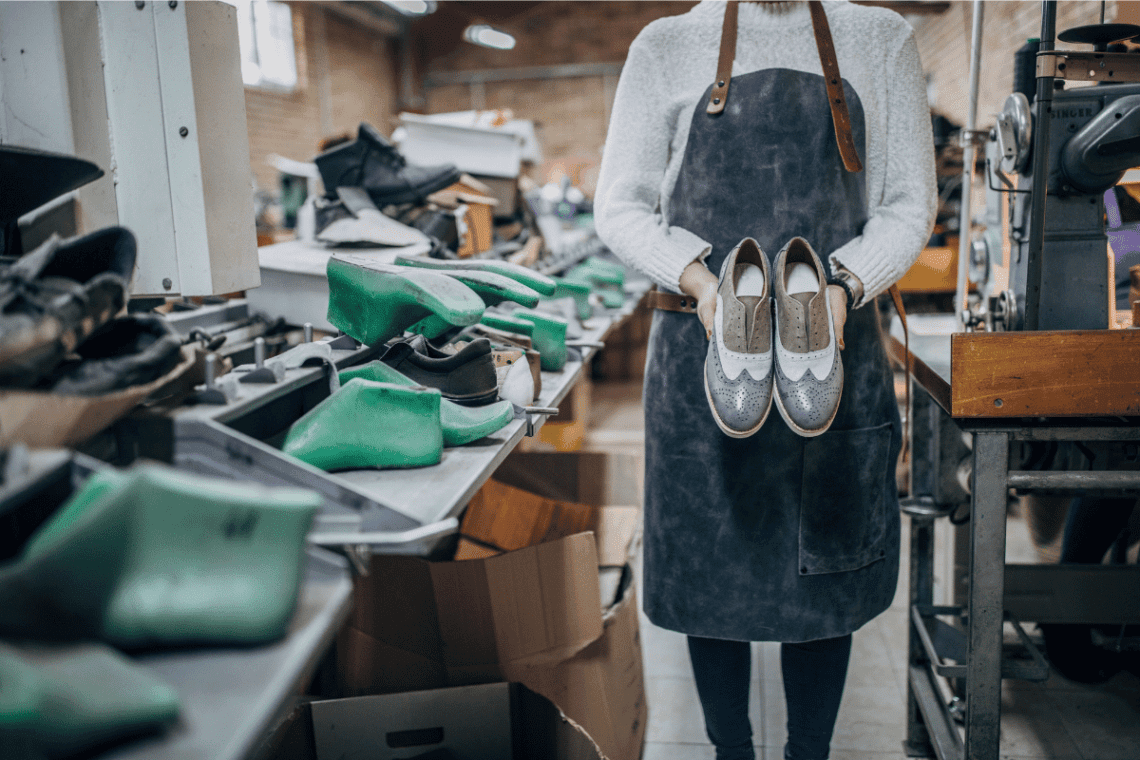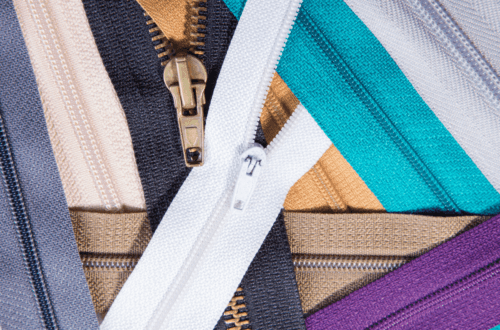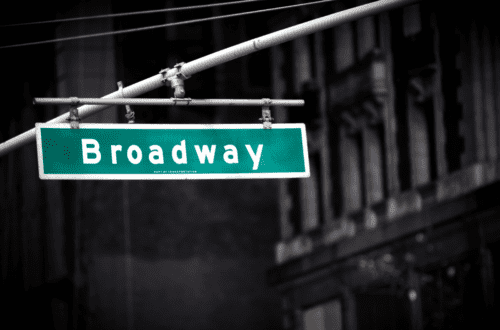
Working on or off Broadway, you quickly become aware that no one saves the day quite as often as your local cobbler. These skilled artisans possess a wealth of expertise to address a wide range of shoe-related concerns. From repairing worn-out soles and heels to replacing damaged parts, cobblers are adept at keeping a show’s footwear safe and ready for intense use in a live performance.
Additionally, cobblers can expertly handle tasks such as altering the fit, making it quick-change ready, as well as helping with non-shoe pieces. Whether your shoes require a simple fix or a complete overhaul, cobblers are your go-to resource. Join us as we explore the services offered by your local cobblers and walk you through the magic they are capable of for your next show.
This post may contain affiliate links. We only recommend products we have tried and tested ourselves. If you use these links to purchase something, we may earn a small commission at no additional cost to you. These links help us cover the running costs of The Wardrobe Guide! Please read our full disclaimer.
How do I find a Cobbler in my Area?
First, start by doing a Google search for “local cobblers”. Check the reviews, and after you decide on who you want to try, give the business a “test run”. That is, bring them a fairly easy alteration or repair– only one or two, not a huge bag of shoes.
With this test run, you are feeling out how they work in relation to your needs. In theatre, sometimes you might need to ask for something a little weird. You’ll need to find a cobbler open to these “weird” requests. Also, you want to feel out how long it takes for them to complete something like rubbering a pair of shoes.
Finally, you are also looking at what the finished product looks like and how it holds up. You might find that one cobbler might cut their glue with oil, which might make the rubbers come off easier, whereas another cobbler’s work might stay intact for an entire run.
How Should I Prepare My Shoes to Take to the Cobbler?
Once you find a local cobbler that you love, who works with you to consistently give you the repairs of your dreams, it is normal to want to use their services A LOT. Sometimes, this might mean you feel like you are in their shop every other day with another load of shoes.
Because mistakes sometimes happen, and cobbler business hours are often very different from theatre performance hours, you want to make sure to streamline the items that you send off-site.
Label
First, label your shoes. The standard on Broadway is to apply a P-Touch label typically on the heel of the insole (but sometimes elsewhere, depending on the shoe and its function). Then, cover the label with clear tape such as packing tape to seal the label further onto the shoe. This way, the repeated friction from wear won’t cause the label to peel off.
The minimum info you want on this label is the actor’s name who wears the shoe. Other info that might be on it (depending on the wardrobe supervisor’s preference) could be the scene, character, or the name of the show
Keep an In-House Record
The second thing to do is to create a “Shoe Repair List”. Very similar to your regular costume repair list, but add a column to check when the shoes are removed from the building, and another column to check when they are back on site. This way, you know everything is accounted for and back in the theatre before the cobbler closes at 5, and your wardrobe crew is called at 5:30 to start checking things in.
Clearly Communicate Repairs
Third, if you are bringing a large load of shoes to your cobbler, with different notes for each one, oak tags can really help cobblers keep all your shoes organized as far as what needs to be done on what shoe. Just write your repair notes on an oak tag, and safety pin it to the pull tab on the heel, or to the laces, so your cobbler has something to reference when they are looking at a bag of 7 pairs of black boots.
Keep Transportation Organized
Finally, you will want a uniform way to carry the shoes in and out of the building. With one in place, nothing gets lost in a car, and the shoes all go to a contained place when their repairs are finished in the shop. A favorite in the Broadway community is to have an LL Bean tote bag embroidered with the company’s name. These tote bags are perfect for hauling shoes around– not only are they heavy duty, but if you get the largest size, they can easily carry a whole ensemble worth of shoes.
This organization also makes pickup more straightforward, in case you have to send an intern, or someone else who might not have dropped off the shoes, to pick them up. You can also attach a luggage tag to your shoe bag with contact information, in case the cobbler has any questions or concerns regarding the repairs.
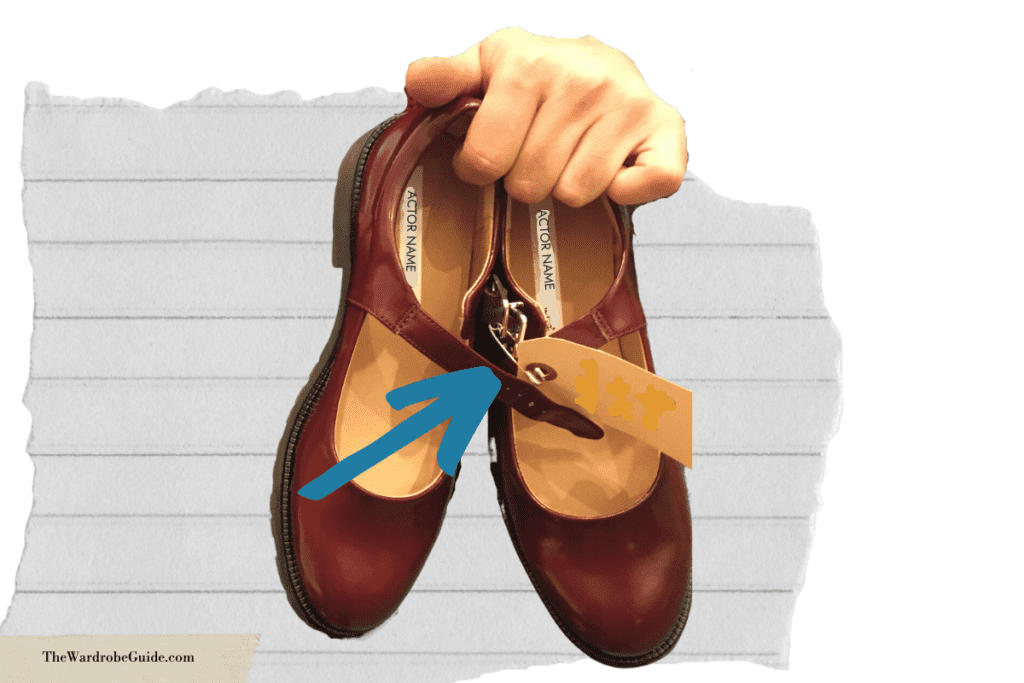
How Long Does it Take for my Local Cobbler to Repair Shoes?
In NYC, the cobblers that wardrobe departments frequent can often work through any repairs you might have in a couple of hours. However, if you are in tech, and dropping off 10+ pairs of shoes, we would suggest dropping your shoes off first thing in the morning to have for that evening’s run. When dropping off one or two pairs of shoes, it is not unheard of for the cobbler to just ask you to stay in the shop and wait for 15 minutes, and you can bring your shoes right back with you.
Outside of NYC, we suggest asking your local cobbler how long your repair will take them when you first start dropping things off. In the event that the cobbler suggests a turnaround that is multiple days, have a conversation where you explain to them that the shoes have to be onstage that evening. If that isn’t possible, maybe you have shoe doubles that you can sub in while certain shoes are out-of-house. Maybe you have to go back to the drawing board and search for another cobbler.
Call Ahead
When considering repair times while taking items to your cobbler, we encourage you to have realistic expectations. Sometimes, when you are in the heat of tech or previews, it can be tempting to bring every shoe in the show to get rubber at once and request it back in an hour. However, this is hardly fair to your cobbler who has other business to attend to.
If you think you will be showing up to their shop with an emergency load of shoes, try calling ahead. Explain the situation you are in, and ask if it’s possible to accommodate your needs. If it just isn’t possible for them, it may be up to the wardrobe supervisor or the costume shop manager to come up with an alternate plan. This might mean letting your cobbler know that you will be dropping off a large amount of repairs first thing the next morning.
Do You Have a Problem With a Pair of Shoes and You Aren’t Sure How to Fix It?
First, please head over to our subreddit, /r/thewardroberoom. Our goal is to create a place there where wardrobe professionals can meet and brainstorm ideas together!
Second, don’t be afraid to ask your cobbler for their input! Remember that they are shoe professionals! You may find that they have a brilliant idea that you’d never consider.
What Services Can My Local Cobbler Provide For My Shoes?
It’s important to note that the range of services provided by cobblers may vary depending on their expertise and equipment. Consulting with your local cobbler will allow you to discuss the specific needs of your shoes and determine the appropriate repairs or enhancements.
That being said, we are still working on this list. It is intended to be a reference for wardrobe professionals who are stuck with a shoe problem and don’t know what to ask for, or what is possible. If you have come across a common issue that is not listed below, please let me know in the comments! And please come back for any updates to this list!
Repair Services
Patching
Cobblers can patch the sole and the upper part of a shoe (if the shoe is made of leather). The earlier you find that the leather or sole of a shoe is wearing away, the easier and more seamless the patch will be.
Your local cobbler can also mend seams that are coming unstitched on a pair of shoes.
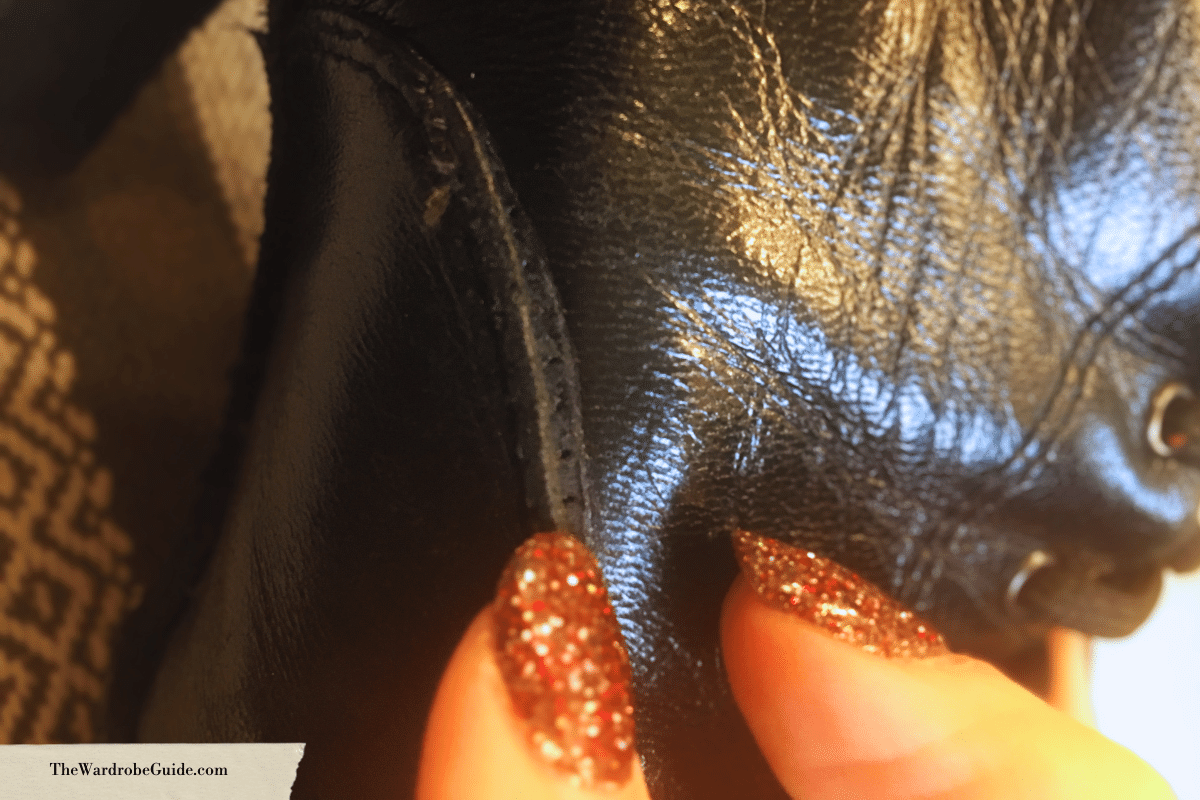
Re-soling
Sometimes you might find that the sole of a shoe is wearing through, or pulling away from the upper part. Re-soling a shoe is an easy job for a cobbler!
(However, If you find the sole pulling away from the rest of the shoe in a small area, your best bet is to apply some Barge or Shoe Goo to the shoe in-house.)
A rule of thumb is that, while you should keep an eye on a shoe if you see some detachment happening, it’s not worth it to start gluing until the pulling forms a hole large enough that you can stick your fingertip between the upper and the sole.
Zipper and Buckle Replacement
Your local cobbler can replace broken or damaged zippers and buckles on your shoes!
Elastic Replacement
For shoes with elastic elements, cobblers can replace worn-out or stretched elastic to restore the snug fit.

Shank
Unfortunately, even a great cobbler can’t do much about a broken shank. (A shank is a small piece inside the sole of a “dress shoe” that acts as a sort of bridge between the toe and the heel. Though you can’t see the shank, it is usually located around the arch of the foot). If you have a shoe with a broken shank, the best thing to do is to replace the shoe. Dancing on a shoe with a broken shank can really take a toll on the actor’s body.
Theatrical Rigging Services
Heel Braces
Heel braces are especially useful if the show is dance-heavy, and the women are wearing heeled shoes or boots in extensive dance numbers. These braces reinforce the heel of the shoe, so there is less of a chance of the heel breaking off or becoming unstable during a performance.
In productions using cheap shoes that were not meant for performance, heel braces are a good preventative measure to ensure the safety of the performer.

Zippers
Shoes such as Doc Marten Boots, or High Top Sneakers can be difficult to get into. In quick changes involving a pair of shoes that are hard to apply quickly, you can install a side zipper into the shoes!
Quick Rigging Hooks
Strappy shoes can also be challenging on a quick change! A solution to this challenge is to have your cobbler add a hook to the shoe’s strap (not unlike the hooks used on bras or swimsuits). This hook can close the strap by sliding over the strap’s buckle. The tension created by a foot being in the show will ensure that the strap doesn’t slip out of the hook.

Taps
Self-explanatory– Sometimes you need to add taps onto a pair of sneakers or boots! Your local cobbler can help you out!
Dance Rubber/ Suede Soles
Is there a pair of shoes that an actor feels are too slick on the stage? Or maybe the shoes are too sticky and the actor can’t properly dance in them? Your cobbler can change the soles of the shoes out to be dance rubber or suede, depending on what you need!
Dance rubber comes in black, beige, and white typically, and can be added to a single-soled sneaker or wedge, or a double-soled dress shoe or heel. Some actors might want their toes rubbered, but not their heels, or vice versa.


Shoe Fit Services
Strap Extension
Do you have a strap on a shoe that is not long enough? Or even too long? Your local cobbler can extend a leather strap, or add an elastic piece to a strap if more flexibility is needed.
While your cobbler can also add more holes into a strap for a tighter or looser fit, that alteration is actually fairly quick and easy to perform in-house if you have a leather awl!
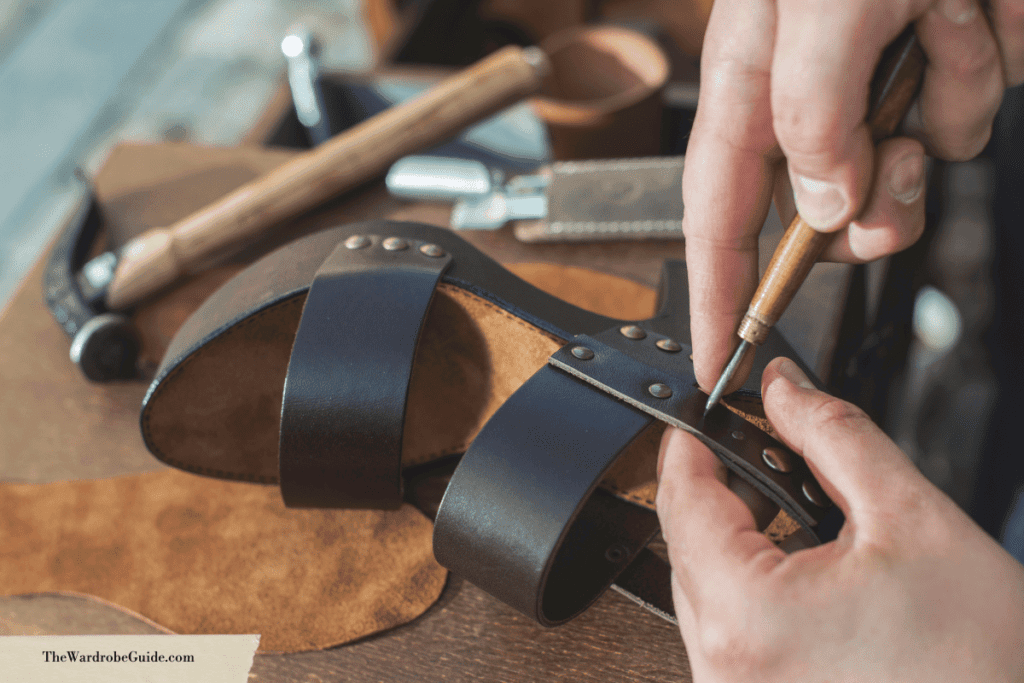
Stretching
If your actor has a bunion, or if the shoe is otherwise pinching them, your local cobbler can help create more space in the toe box.
Fit Customization
Cobblers can offer customization options such as adding extra padding, orthopedic inserts, or lifts to enhance comfort and support.
Non-Shoe Services
Repairing most Leather Goods
Patching, restitching, and adding holes to belts and other straps. While the sewing machine you have in-house might have a hard time working through some types of leather to repair a bag or a belt, the machine your cobbler has will definitely be able to get through the toughest material. Depending on your relationship with your cobbler, they might be willing to work on other leather goods for you as well. Don’t be afraid to ask! All they can say is no.
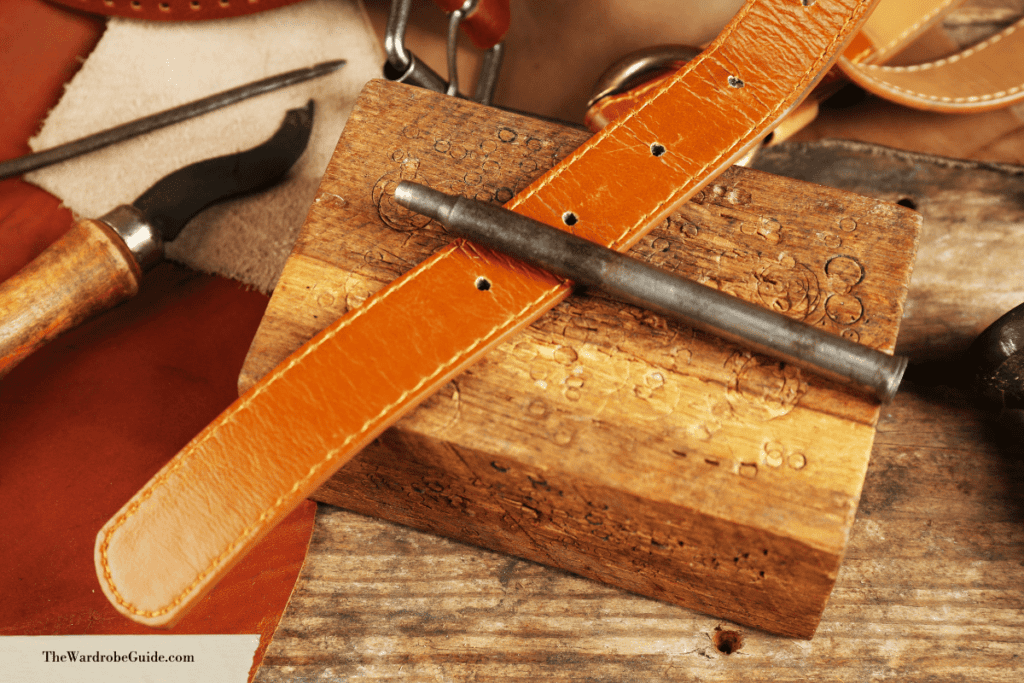
Will my Local Cobbler have the Hardware I Need to be Added to My Shoe?
It really depends on the cobbler. In NYC, the popular cobblers will most likely be prepared to add quick rigging hooks or zippers into your shoes. This is because they have seen many costume folks come through their doors. If you are in a more rural area, however, you may need to bring your preferred hardware with your shoes. Don’t let that be off-putting to you, though! Pick up the correct length YKK zipper at your local JoAnn’s. Also, quick rigging hooks are simply the same hooks that are used on bras or swimsuits. Because of this, they can be shopped at most notions stores. You can even find dance rubber sold in rolls at Manhattan Wardrobe Supply or even on Amazon if needed!
As you can see, the local cobbler is an indispensable resource for any wardrobe department. The work of a great cobbler can make an actor feel infinitely safer and taken care of in their costume shoes.
Are there any additions to this list that are surprising to you? Anything you feel we should add? We are also looking for images of all the shoe repairs or alterations that we currently don’t have images of, for others to use as reference.
Let us know in the comments below, or contact us!


